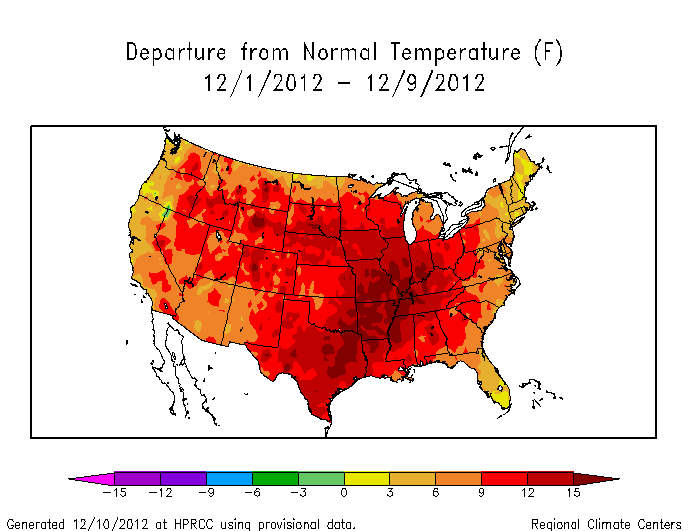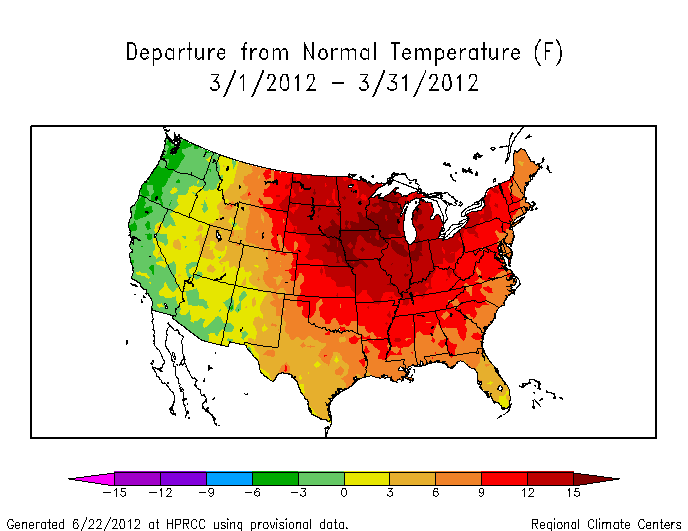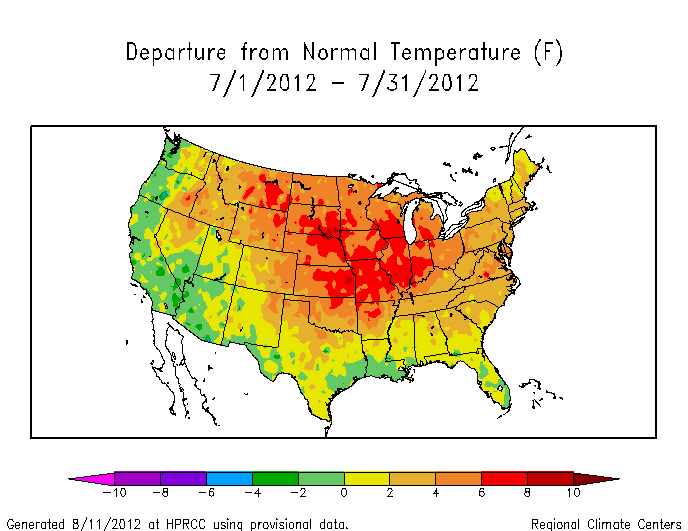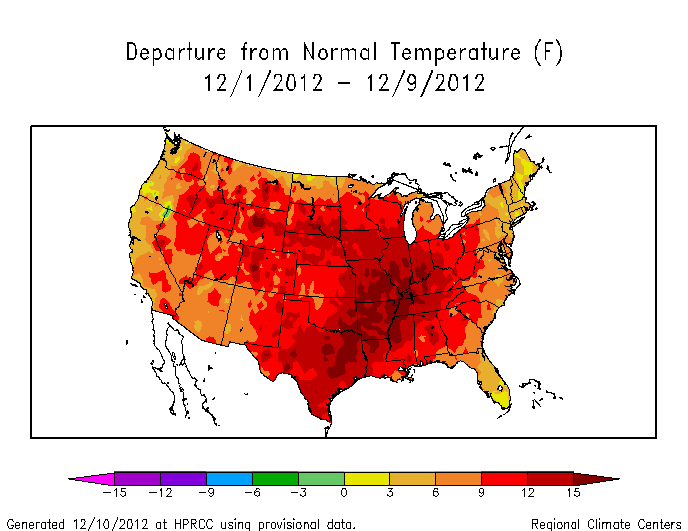A blowout in sports – whether it’s baseball, football, basketball, or soccer – is usually boring to watch. By blowout, I mean a game when one team obliterates the other. You know, 14-2 in baseball, 40-7 in football, etc. But in climate, the month-to-month ups and downs in temperature departures, are one example when a blowout is actually more fascinating to watch than another month of the “climate normal“.
As I mentioned earlier, December 2012 is setting the year 2012 to be a blowout in terms of the “competition” between years to be the warmest on the 118 year record. Here’s the updated evolution of December 2012 temperature departures from figures I got from the HPRCC map maker and laced together for an animated look at the month.

The most obvious feature is the continuing large and positive temperature departures for most of the country. You have to be a little careful because the figures have shifting colorbars on the bottom. Dark red doesn’t mean the same thing on every figure, but the message is clear as day. December is much much warmer than usual. The last week or so has continued the trend, although you do see the effect of the cold frontal passage around December 11-12 in the animation. Stay tuned, but based on a quick look at long-term weather model forecasts, I wouldn’t expect a dramatic change in the weather regime until at least December 25.


